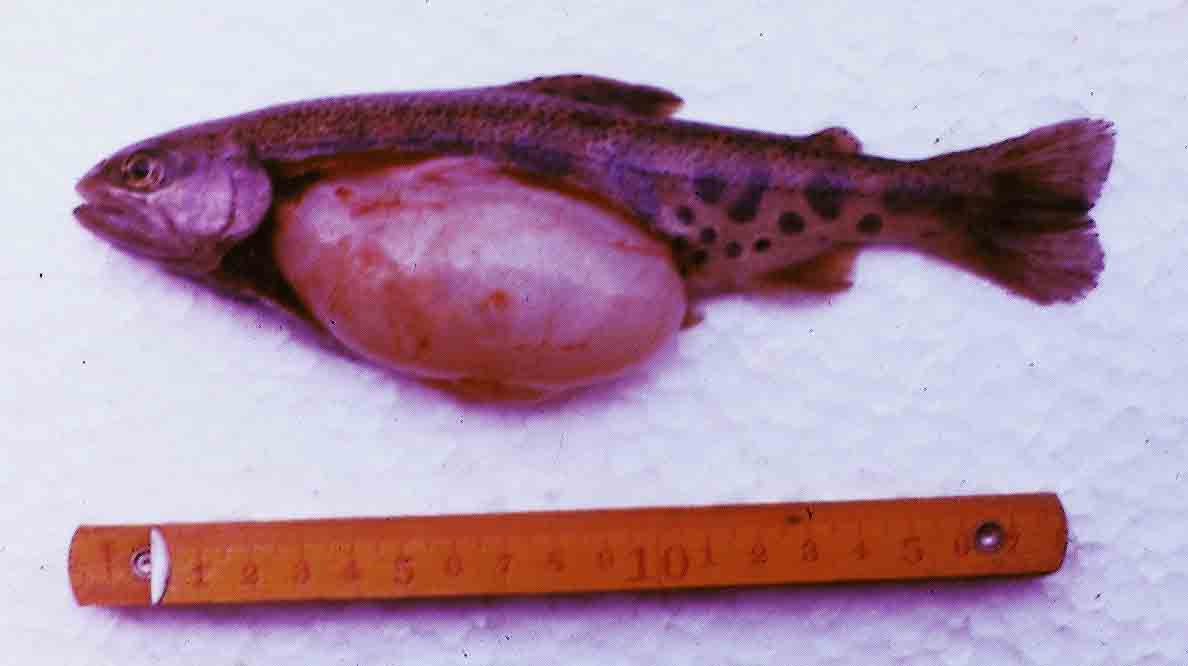

| Pathogen | Candida sake |
|---|---|
| Taxonomy | Anamorphic fungi, Hyphomycetes |
| Hosts | Salmonid fishes |
| Disease name | Tympanites ventriculi |
| Infection site | Stomach |
| Clinical signs | Abnormally swollen abdomen is observed (Fig. 1). |
| Fungiology | Candida sake is a yeast whose body is oval (3-4~3.5-6 Êm) or elongate (2-3~6-15 Êm) (Hatai and Egusa, 1975; Hatai, 2006). It forms hyphal cells (pseudomycelium). |
| Pathology | A distended stomach filled with gas bubbles and flimsy gastric wall are observed in the diseased fish. The gastric mucosa is erosive (Awakura and Kimura, 1972). The fish becomes lethargic, and finally dies due to the impairment of feeding and swimming (Hatai, 2006). |
| Health hazard | Since this fungus is not infectious to human, it is harmless in food hygiene. |
| Diagnosis | Check the yeast in the stomach. |
| Other information | Because this disease cannot be experimentally reproduced, the disease mechanisms are unknown. |
| References |
Awakura, T. and T.
Kimura (1972): A gastric dilatation found in pond-cultured Oncorhynchus masou. Fish
Pathol., 6, 121-124. |
(Photo by T. Awakura)
Fig. 1. Masu salmon showing tympanites vebtriculi